Mastering the Art of Cleaning Candle Jars
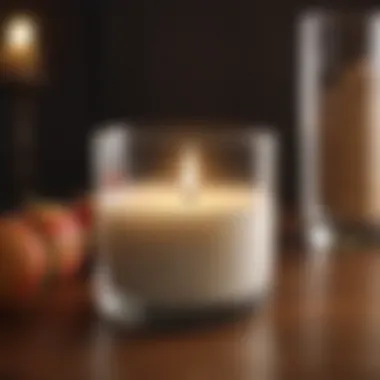
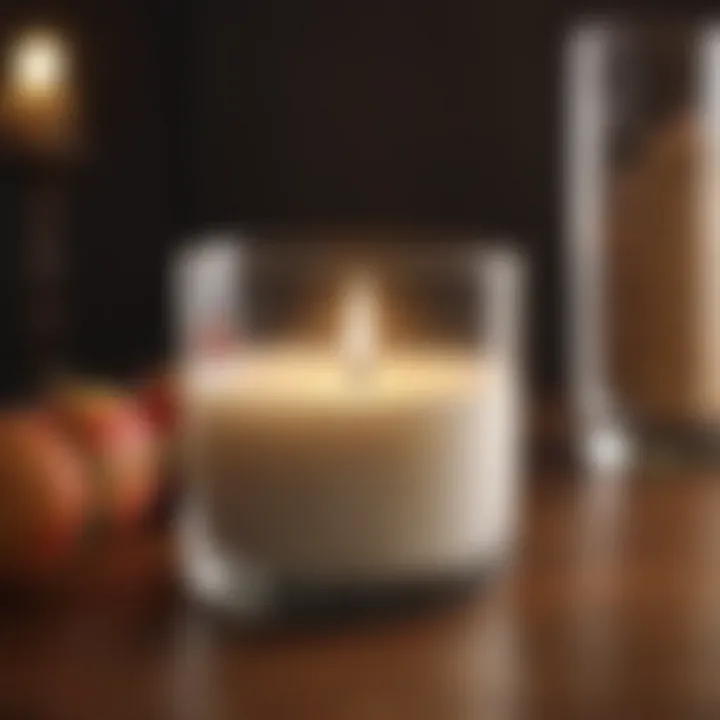
Intro
Cleaning out a candle jar might seem like a minor chore, yet it offers more than just a fresh start for your candle vessels. Many enthusiasts, from eco-conscious consumers to crafty DIY aficionados, find value in this task. Not only does it contribute to a more organized living space, but it also paves the way for repurposing those jars into functional or decorative items. The process taps into a resourceful mindset, making sure that every leftover ounce of wax is removed, and every jar gets a second life.
This guide is structured to walk you through each meticulous step of cleaning your candle jars. We will explore various methods, helpful tips, and environmentally-friendly techniques, ensuring that you can engage in this task with ease and efficiency. You may be surprised to learn that this is not just about cleaning but also about embracing sustainability in your everyday life. Prepare to transform your candle jars from simple waste into treasures that can be used creatively in your home.
Preamble to Candle Jars
Candle jars are not just vessels holding fragrant wax; they are essential components of ambiance, memory, and even self-care rituals. Their importance extends beyond a mere decorative purpose. The gentle flicker of a candle can create a serene atmosphere, evoke cherished memories, or even mark a momentous occasion. The interplay of light, scent, and aesthetics ensures that candle jars have secured a spot in many households. By understanding the nuances of these jars, we open a door to a world of both sensory pleasure and practicality.
Understanding Candle Composition
To fully appreciate the role of candle jars, one must first grasp the interplay of materials that go into creating a candle. Most commonly, candles are composed of wax, wicks, and fragrance oils, among other ingredients.
- Wax: The heart of any candle, wax can be made from various sources: paraffin, soy, beeswax, or even palm. Each type has its own burning characteristics and environmental impact.
- Wick: This component draws the melted wax upwards to create the flame. Wicks can be made from cotton, wood, or specialty materials, influencing how the candle burns and how effectively it holds scent.
- Fragrance Oils: These are infused in varying degrees to provide the desired scent throw. Natural essential oils can be used, but synthetic options are also popular for their longevity and variety.
In essence, a candle is a delicate blend of physics and chemistry, relying on a balanced composition to achieve that perfect burn.
Common Materials Used in Candle Jars
The materials used to produce candle jars can also vary widely, often impacting both functionality and aesthetic appeal. Understanding these materials can help buyers make informed choices.
- Glass: Clear or frosted glass is prevalent for its aesthetic qualities and ability to withstand heat. It allows the beauty of the flame to be visible, enhancing the candle experience. Plus, glass is highly recyclable, making it an eco-friendly choice.
- Ceramic: This type of material offers durability and a unique artistic expression. Ceramic jars can come in various finishes and designs, making them suitable for home decor.
- Metal: Often found in vintage-style candles, metal containers can provide a rustic touch. However, they require careful handling to avoid overheating and may not always be suitable for kitchen or dining settings.
- Plastic: While less common, some candles are housed in plastic jars. These are typically cheaper but less durable and environmentally friendly compared to other materials.
To sum it all up, understanding these core components of candle jars elevates the experience of using them, transforming the act of lighting a candle into a conscious, thoughtful ritual. Whether it's about creating a cozy evening or adding flair to your home decor, knowing what goes into those jars can contribute significantly to making the right choice.
Why Clean Candle Jars
Cleaning candle jars is more than just a matter of tidying up. It's about recognizing their potential beyond the flickering flame and the pleasant aroma that once filled your room. When you take a moment to understand the importance of cleaning out these jars, you open the door to sustainable practices while also enhancing your home environment.
The act of cleaning jar can have significant environmental benefits. By repurposing a jar that once held a delightful scent, you’re contributing to waste reduction. Many people don’t realize that candle jars—like those made of glass or ceramic—can have a second life if cleaned properly. This is pivotal as it helps minimize waste and encourages the cycle of reuse.
"Every little act contributes to a larger change. A candle jar cleaned today is one step less in a landfill tomorrow."
Another critical aspect is the practicality of using cleaned jars. When properly cleaned, they can serve various purposes around the home. You might transform them into storage containers for dried herbs, office supplies, or even use them for homemade gifts like layered bath salts. The possibilities are boundless; it’s about letting your creativity flow.
Environmental Benefits
Cleaning candle jars underscores a commitment to environmental consciousness. Here are some significant points that illustrate how this practice fosters a greener planet:
- Reduces Waste: Instead of tossing out used jars, cleaning them allows for repurposing. This action contributes to reducing the amount of waste that enters landfills.
- Encourages Upcycling: By rethinking the purpose of your candle jar, you engage in upcycling, turning something often discarded into functional storage or decorative pieces.
- Saves Resources: Every time you reuse a jar, you save the production resources that would have gone into making a new product. This act effectively decreases your carbon footprint.
- Promotes Mindful Consumerism: Understanding the lifecycle of your purchases encourages more conscious buying habits. You may choose brands that emphasize recyclable materials or sustainable practices in their production.
Practical Uses for Cleaned Jars
The versatility of a cleaned candle jar goes beyond just being a pretty face. Once you’ve successfully cleaned your jar, consider how it can fit into your daily life:
- Storage Solutions: From holding office supplies like paperclips and pens to storing kitchen staples like lentils or spices, the possibilities abound.
- DIY Projects: Let your imagination run wild! Cleaned jars can be used as bases for homemade candles, terrariums, or even planters for small herbs.
- Gifts and Decorative Items: Fill a jar with homemade goodies, such as cookies or bath salts, and voilà! You have a delightful gift. You can also decorate jars with paints or ribbons for a personalized touch in your decor.
- Organization: Clear jars can help you organize your space effectively, providing visibility to items while also decorating the surfaces on which they sit.
In essence, cleaning candle jars opens up a realm of sustainable practices while enhancing your home’s aesthetics. This simple act brings with it a myriad of benefits that resonate well with our growing need for eco-friendliness and creativity. Whether you decide to repurpose or simply keep your living space orderly, the importance of taking this step cannot be overstated.
Preparing for the Cleaning Process
Before diving headfirst into the task of cleaning out those well-loved candle jars, a bit of prep work can make all the difference. Think of this as laying the groundwork for a thorough and effective cleaning session. Not only does preparation streamline the process, but it also ensures that you have all the necessary tools and a conducive environment to work in. Without the right setup, what should be a rewarding task can easily turn messy and frustrating.
Gathering Necessary Tools
To kick things off, start by scouring your home for several essential tools to facilitate your cleaning. Here’s a handy list of what you might need:
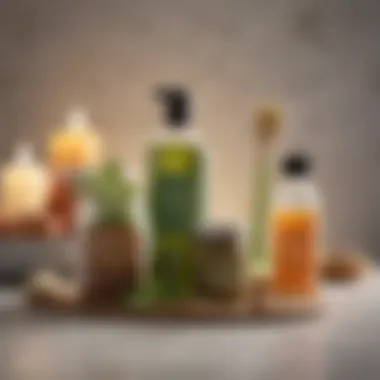

- Butter Knife or Spatula: Great for scraping out stubborn wax remnants.
- Paper Towels or Cotton Rounds: Essential for wiping down surfaces and collecting any leftover wax.
- Hot Water and a Bowl: For the hot water method, be sure to have a substantial bowl at hand to collect melted wax.
- Freezer Bags: For the freezing method. Just grab a few to store jars if needed.
- Cleaning Solution (preferably eco-friendly): A simple mixture of vinegar and water often works wonders without harsh chemicals.
Before you begin, ensure all tools are clean and ready to be used. A little organization goes a long way, and having everything within arm's reach can minimize disruptions during your cleaning session. Remember, the goal is to make this as smooth as possible.
Choosing a Suitable Workspace
Selecting the right spot to clean your candle jars is half the battle won. You don't want to find yourself knee-deep in wax only to discover you're in the middle of a carpet or an area that’s hard to clean. Here are a few pointers on finding the perfect workspace:
- Flat Surface: Whether it's a kitchen counter, a sturdy table, or your patio, ensure it’s stable and easy to access.
- Ventilation: If you’re working with strong cleaners or even certain wax scents, having good air circulation is essential. Open a window or, if you have it, consider working outdoors.
- Avoiding Valuable Items: Make sure to clear off anything valuable or sentimental that could fall victim to spilled wax or cleaning residue. It’s better to be safe than sorry.
- Protective Layer: Lay down some newspapers or old towels to safeguard the surface and catch any drips or spills.
In summary, preparation is not just a box to tick off; it’s a fundamental step that can save you time and effort down the line. The right tools and workspace make for a hassle-free cleaning process, letting the focus remain where it should be—on refreshing those candle jars for their next life.
Techniques for Cleaning Out Candle Jars
Cleaning out candle jars is not merely a matter of removing leftover wax; it’s an essential step in embracing sustainability and creativity. Improper cleaning can leave behind residue that not only taints the future use of the jar but can also be harmful to the environment if disposed of negligently. Different techniques cater to various types of wax and jar materials, making it vital to choose the appropriate method for effectiveness and safety. Here, we’ll explore several effective techniques that ensure your candle jar is ready for a new life.
The Freezing Method
The freezing technique is a simple yet effective way to tackle the wax remnants stuck in your candle jar. The process involves placing the jar in the freezer for a minimum of four hours, allowing the wax to harden and shrink. When you remove the jar from the freezer, check for cracks, and then gently tap the bottom or sides to dislodge the hardened wax.
This method is especially handy for soy or paraffin waxes, as they shrink easily when cold. The benefit of this method lies in its lack of harsh chemicals or exposure to heat, providing a safer approach for those cautious about their cleaning process.
Hot Water Method
If you prefer a method that involves a bit more hands-on work, the hot water method might be just your cup of tea. Start by boiling water and pour it carefully into the candle jar up to the rim, allowing it to sit for several minutes. The hot water will melt the wax, allowing it to float to the top. After it cools, you can easily scoop it out with a spoon or even pour it off if there’s enough melted wax.
However, if your jar is made of glass, be cautious to prevent thermal shock, which can cause cracking. This method is particularly beneficial for those who have a larger amount of wax to deal with and want instant results.
Using Heat to Remove Residue
When residue just doesn’t want to budge, a more direct method may be necessary—using heat. A hairdryer can be an effective tool here. Set to a moderately hot setting, point it towards the sides of the jar. The aim is to soften the wax, allowing it to adhere to warmer surfaces and subsequently peel off.
To take it a step further, you may use a double boiler setup, placing water in a saucepan and letting the jar sit above for a gentle heating effect. It’s crucial to continually monitor the temperature; too much heat could risk breaking the jar or releasing harmful fumes from the wax. This method works wonders, particularly for stubborn waxes that resist alternative cleaning methods.
Chemical Cleaners and Their Effectiveness
While many prefer natural DIY approaches, store-bought chemical cleaners can offer a convenient solution for tough residue. These cleaners are designed to dissolve wax and can be highly effective, especially those specifically formulated for candle wax removal.
Before diving headfirst into using chemicals, it’s crucial to read the labels. Opt for eco-friendly options that minimize negative environmental impact. Keep in mind that chemical cleaners may require additional safety measures, such as wearing gloves or working in a well-ventilated space. As a tip, always test a small hidden area of your jar first to ensure it won’t damage the finish.
"The method you choose should depend on your jar's material and the wax type you've been burning. If it seems stubborn, don't hesitate to mix methods for the best result!"
In summary, the techniques for cleaning candle jars boil down to personal preference, jar material, and the type of wax used. By understanding these various methods, you can effortlessly maintain your candle jars, giving them renewed life while practicing sustainability.
Removing Wick and Metal Parts
Cleaning out a candle jar doesn't just stop at removing the remaining wax; it also involves taking out the wick and any metal components that might be left behind. This is crucial for a few reasons. First, ensuring that these elements are completely removed makes the jar easier to repurpose. If you plan to utilize the jar for anything like storage or decor, any leftover bits of metal or wick can be both an eyesore and potentially hazardous. Secondly, some wicks, especially those made from metal, can release toxins if they're not properly cleaned and removed.
In short, understanding how to effectively remove these items is just as important as learning how to clean the jar itself.
Techniques for Wick Removal
Wick removal can be a bit tricky depending on the type of candle and how it was made. Generally, you can follow these simple techniques:
- Gentle tugging: If the wick is still attached to the bottom, try grasping it and pulling it out gently. Be careful not to damage the jar.
- Twist and pull: Some wicks are more resilient. For these, try twisting the wick while pulling it; this might loosen the adhesive stuck at the base.
- Scissors: If the wick is stubborn and short, using scissors to cut it close to the base can make your job easier. After cutting, the remaining piece can sometimes be plucked out easily.
Dealing with Metal Ejectors
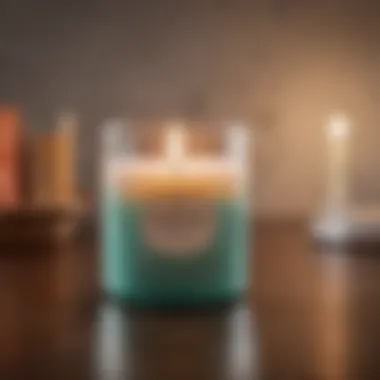
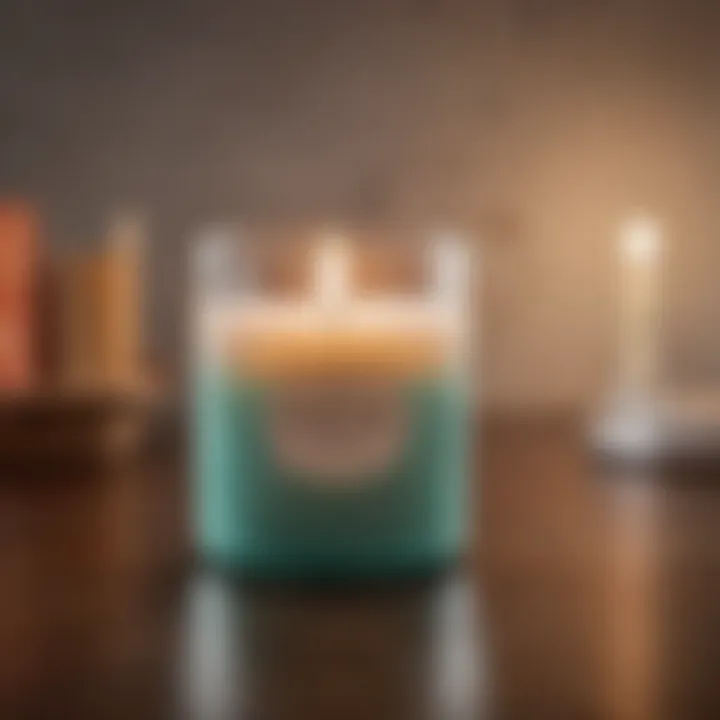
Metal components, like wick holders or any metal ejectors that are often attached to the base of the wick, need a little more attention. Here are some pointers:
- Heat Method: You can use a hairdryer on low or warm water to soften the wax still clinging to the metal. This can sometimes allow the metal piece to pop out with gentle pressure.
- Pry it out: If it’s really stuck, use a flathead screwdriver or a similar tool to carefully pry the metal piece out. Make sure you're not applying too much force, as you risk cracking the jar.
- Tweezers for Smaller Pieces: For tiny bits that may flake off, grab a pair of tweezers. They give better control, helping to avoid scratches on the glass.
After you've successfully removed the wick and metal parts, take a moment to check for any remaining residue. A quick inspection can save time when you begin the next steps in the cleaning process, ensuring that your jar is thoroughly ready for its new life.
Remember, removing every piece allows for safer and cleaner repurposing, raising both functionality and aesthetics.
By taking the time to carefully remove these last bits before proceeding to clean the jar, you set yourself up for a successful transformation of your candle container.
Finalizing the Cleaning Process
After putting in all that effort to clean your candle jars, it’s vital to finalize the process properly. This stage is about ensuring your jars are spotless and ready for their next life. Just like a chef wouldn’t leave behind leftover ingredients on a plate, you don't want to leave wax remnants or moisture behind. Making sure every corner of the jar is squeaky clean not only enhances its aesthetic but also prepares it for repurposing effectively.
Inspecting for Residue
Once you think your candle jar is clean, take a moment to closely inspect it. Shine a light through it or hold it up to the sun — sometimes, what the eye can't see might just surprise you. Look for any wax spots or scent remnants. Residue can lead to unpleasant odors or reactions when you use the jar for new purposes.
- Look for mixed wax types: Different waxes can have varying melting points and compositions, so don’t skip checking for any small bits.
- Feel the surface: Run your fingers along the inside of the jar; a waxy or sticky feel could signal that more cleaning is necessary.
- Check the bottom: Often, resting debris can be unnoticed; give the bottom a good once-over.
If you find any residue, don’t fret. Use your preferred cleaning method again to ensure a full clean slate. The aim here is a jar that's not only visually appealing but also practically ready for its new chapter.
Best Practices for Drying the Jar
After you've scrubbed and inspected your jar, the next step is to dry it properly. This ensures no lingering moisture remains, which could compromise any future contents you plan to place in it. A wet candle jar isn’t just inconvenient; it can also trap odors and encourage mold if the jar is not thoroughly dried.
- Air-dry when possible: Place the jar upside down on a clean towel or drying rack to allow gravity to help. This method is effective and gentle on the jar.
- Avoid direct sunlight: While drying, avoid placing the jar in direct sunlight. This can warp some materials, especially glass that may not be designed to handle high heat.
- Use cool air: If you're in a hurry, a hairdryer set on cool can help accelerate the drying process, but avoid hot settings, which could risk damage.
By taking these drying precautions, you set the stage for making the most of your freshly cleaned jars. This stage is essential — much like letting a fine dish rest after cooking, it's about ensuring everything comes together harmonically.
"A clean jar is a canvas; it’s up to you what masterpiece you want to create."
Whether you’re keeping it for storage, decor, or a DIY project, ensuring each step is done correctly leads to a rewarding experience, transforming what was once a simple candle jar into an integral part of your home.
Repurposing Cleaned Candle Jars
Repurposing cleaned candle jars is not just an environmentally conscious decision; it's an opportunity to add unique touches to your home. When you take the time to clean out those jars, you unveil potential uses that can serve a functional purpose while also being aesthetically pleasing. This section will explore some creative ways to give these jars a new lease on life—beyond simply tossing them in the recycling bin.
Creative Storage Solutions
One of the simplest yet effective ways to repurpose cleaned candle jars is to use them for storage. These jars, especially the larger ones, can be ideal for various items around the house. Whether it's keeping office supplies organized, holding kitchen utensils, or sorting craft materials, the uses are endless. Their transparent nature allows for easy identification of contents, making it a breeze to locate what you need. Here are some efficient storage ideas:
- Bathroom essentials: Store cotton balls, swabs, or hair ties.
- Kitchen use: Use them for spices, loose tea leaves, or snack storage.
- Office decor: Consider them for pens, paper clips, or sticky notes.
- Creative crafts: They can be handy for buttons, ribbons, or other crafting materials.
Incorporating into Home Decor
There’s no denying that a cleaned candle jar can become a fantastic decorative piece in your home. By incorporating these jars into your home decor, you not only save money but also embrace a unique style that reflects personal creativity. Consider using them as:
- Flower vases: Fill them with fresh or dried flowers, adding a rustic or contemporary charm.
- Candle holders: If you are fond of candles, these jars can serve their original purpose. Just pop in a tea light or small pillar candle for a cozy ambiance.
- Accent pieces: Add decorative stones, pebbles, or colored sand at the bottom and place a small plant on top for added flair.
Utilizing these jars as decor pieces helps in minimizing clutter while enhancing the overall aesthetic of your space.
Utilizing in DIY Projects
For those who love getting hands-on, cleaned candle jars can serve as the foundation for countless DIY projects. Think outside the box and experiment with various crafts. Here's a few ideas:
- Homemade candles: Why not use the jars to create your own candles? Melt down wax, add fragrance oils, and you’ve got a bespoke edition to your collection.
- Terrariums: Create a mini indoor garden by layering soil and small plants within the jar. It’s a fun project and brings a bit of nature indoors.
- Gift containers: Decorate the jar and fill it with homemade cookies or other treats for a thoughtful gift.


As you can see, the possibilities are nearly endless once you free those jars from their old waxy life. Such projects embrace sustainability and functionality, making an impact on both your lifestyle and the environment.
Safety Considerations
When cleaning candle jars, prioritizing safety is essential. Working with materials that can cause harm—like hot wax or sharp tools—demands attention. Ignoring safety advisories can lead to burns or accidents, which could set back your efforts to reuse those jars. Conscientious methods ensure that candle jar cleaning becomes a task you approach with confidence, preserving not just your jars but also your well-being.
Avoiding Burns and Injuries
The potential for burns exists when using hot water or heat to remove wax residues. It's vital to manage these methods without risking injury. Here are some tips to consider as you navigate your candle-cleaning journey:
- Wear protective gear: A pair of thick gloves can shield your hands from both heat and sharp implements. Don’t overlook sturdy footwear, either! It’s best to avoid sandals while performing any of these activities.
- Use appropriate containers: If you're heating up jars, avoid thin glass containers. Thick glass or even metal alternatives can withstand heat better and minimize breakage risks.
- Work at a safe distance from flammable materials: Be mindful of your workspace. Soft cloths and papers shouldn’t be within reach of your hot water source. Accidents can happen in the blink of an eye.
Yet, in every method, the core is essentially the same—stay alert and patient. With due caution, the risk of burns diminishes significantly.
Selecting Safe Cleaning Products
Choosing cleaning products can feel a little like navigating a minefield, especially if you want to maintain eco-friendliness. Here’s how to approach product selection:
- Go for biodegradable options: When available, reach for cleaners made from natural ingredients. They’re often less harsh on both the environment and your health.
- Read labels thoroughly: Product safety is easier achieved when you know what’s inside the bottle. Watch for visual branding that indicates
Sustainability Aspect of Candle Jar Cleaning
In today's world, sustainability has become a paramount concern. When it comes to candle jars, cleaning them is not just a mundane task; it signifies a larger movement towards reducing waste and promoting eco-conscious living. Opting to clean and reuse candle jars contributes positively to the environment by minimizing the amount of waste that ends up in landfills. Each jar represents a missed opportunity if thrown away; it could be utilized for various purposes, thus extending its lifespan.
Minimizing Waste Through Reuse
One of the most tangible benefits of cleaning candle jars is the reduction in waste. Each year, countless glass jars are discarded after the last flicker of candlelight has diminished. Instead of tossing these jars into the recycling bin, why not give them a second chance at life? Reusing cleaned jars serves a dual purpose: it alleviates pressure on landfills and gives you an opportunity to showcase your creativity.
Here are some spotlight ideas for reuse:
- Storage Containers: These jars can serve as chic storage options for small household items. Think paper clips, buttons, or even culinary herbs in your kitchen.
- Planters: With a bit of soil and some seeds, you can transform a jar into a quaint mini-garden. Just ensure proper drainage to keep your green friends healthy.
- Craft Projects: If you fancy a bit of DIY, why not turn your cleaned jars into candle holders, vases, or even lanterns? The possibilities stretch as wide as your imagination.
Choosing Eco-Friendly Materials
In line with sustainable practices, selecting eco-friendly materials when cleaning your candle jars becomes crucial. Traditional cleaning products often contain harsh chemicals that can emit volatile organic compounds (VOCs), which are harmful to both the environment and your health. By opting for natural cleaning solutions, you not only elevate the safety level in your home, but you also contribute to a healthier planet.
Some eco-friendly options include:
- Vinegar: An excellent natural cleaner, vinegar can tackle stubborn wax residue. It's safe to use and biodegradable.
- Baking Soda: Known for its scrubbing power, baking soda is another fantastic alternative. It can handle tough spots when sprinkled on a damp cloth.
- Citrus Oils: Extracts like lemon or orange can add a pleasant scent while performing efficiently as a degreaser.
"Choosing to clean and reuse candle jars demonstrates a commitment to sustainability, illustrating how everyday decisions can impact our environment significantly."
By making conscious choices about how we clean and reuse items like candle jars, we align our daily habits with green practices. It's not just about letting those jars gather dust; it’s about taking a stand for a better future, one small action at a time.
End
Cleaning out candle jars seems like a mundane chore, yet it holds significance beyond mere tidiness. This guide outlines the steps to not only ensure that your jars are clean but also ready for repurposing or simply reuse. Each method we explored – from the freezing technique to chemical cleaners – offers distinct benefits that cater to various preferences and needs. Sustainable practices play a pivotal role in modern everyday decisions, making this a relevant topic.
Summarizing Key Techniques
The key techniques to clean candle jars effectively can be succinctly outlined as follows:
- Freezing Method: A cooler approach that allows wax to shrink away from the glass edges, making removal easy.
- Hot Water Method: Simply pour hot water into the jar to melt existing wax, enabling simple disposal after the liquid cools.
- Using Heat: An excellent solution when dealing with stubborn residue; carefully applying heat helps soften the wax.
- Chemical Cleaners: Though potent, one should exercise caution with these, as they can damage the jar or leave unwanted residues.
This variety allows individuals to choose techniques according to their specific jars and personal comfort levels, each providing a straightforward solution for a common household problem.
Encouraging Sustainable Habits
As we round up this guide, it’s essential to think about sustainability.
- Minimizing Waste: By cleaning and repurposing candle jars, you reduce waste that typically ends up in landfills. Instead of tossing them out, your old candle jars can become stylish planters, drinking glasses, or storage containers.
- Choosing Eco-Friendly Materials: When picking new candles or cleaning products, consider eco-conscious options. Candles made from natural wax and without synthetic additives are better for the environment and health.
By embracing such habits, one contributes to a larger movement of sustainability, ensuring that our choices today lead to a better planet tomorrow.
Let's remember: Taking small steps today can lead to significant changes for tomorrow.







